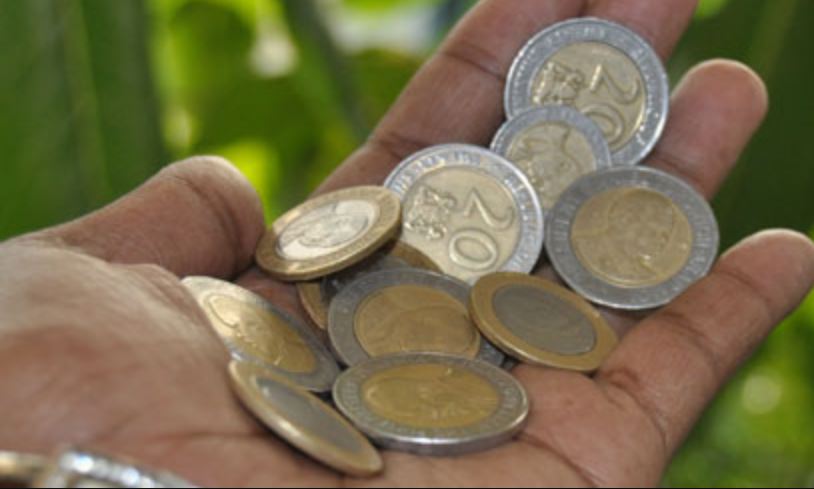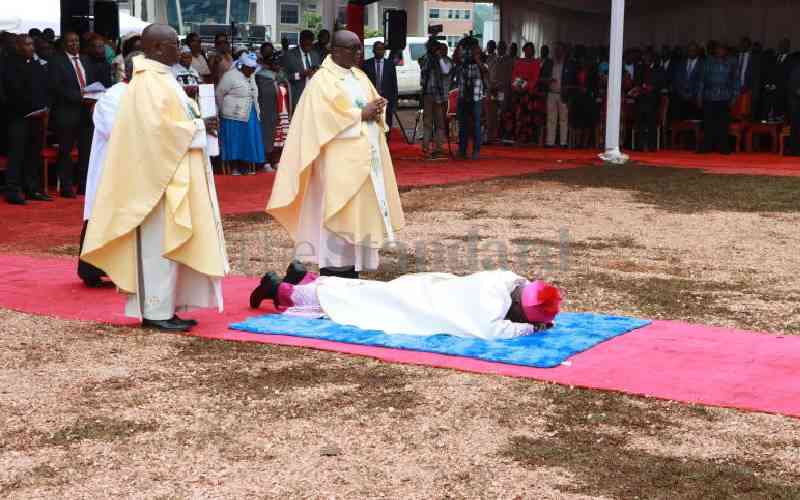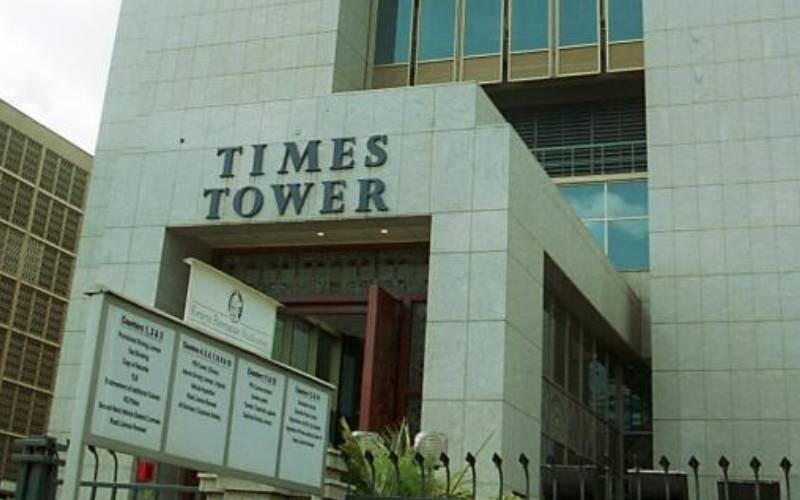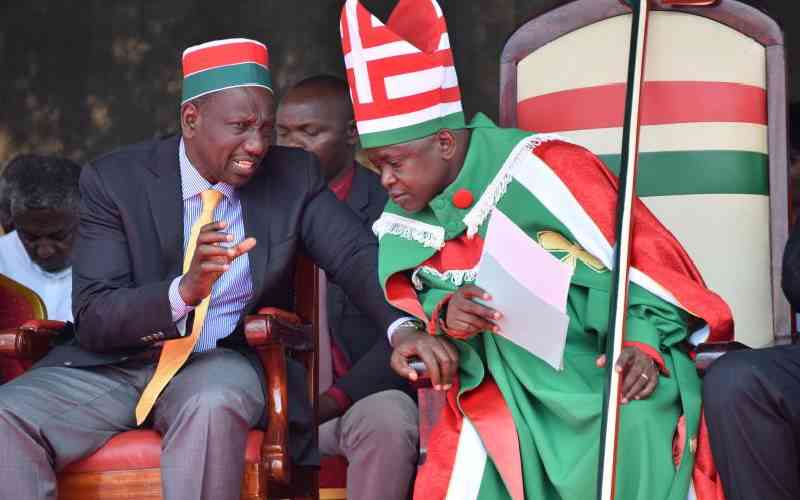
The period between 2013 and 2018 was a golden one for Kenya. It was the era of big money as the country experienced a ‘construction boom.’
This was the period when East and Central Africa’s most expensive railway project, the Standard Gauge Railway (SGR) running for 472 km from Nairobi to Mombasa, was completed.
Over 7,425 kilometres of tarmacked roads - equivalent to 15 Mombasa Roads were laid. And when you include the unpaved roads, the length of new roads stretches to nearly 100,000 km.
More power substations were built after 25 megawatts of geothermal sources were installed. About 537.5 km of transmission lines were also completed, with close to two million new houses and business premises being plugged to the electric grid.
To sum it up, it was a period in which the country pumped an additional Sh4.2 trillion investments, which translates into the size of the economies of Uganda, Rwanda, Burundi, and Southern Sudan combined.
The size of the economy, measured by what experts call Gross Domestic Product (GDP) - or the value of all goods and services churned out by construction companies, farms, factories and offices in the country - more than doubled from Sh4.7 trillion in 2013 to Sh8.9 trillion in 2018.
Apart from the mega-State projects, there was also a flurry of construction activities in the private sector.
Real estate was Kenya’s oil. Suddenly, gigantic shopping malls sprung in different corners of the country.
Private developers got into a fierce race to the sky as each tried to erect the tallest office building in the region.
Sleepy satellite towns in the outskirts of the country’s capital city, Nairobi, suddenly were beaming with plush gated communities.
Major cement manufacturers were smiling all the way to the bank, as they raked record profits.
Meanwhile, during this period, it has never been easier to do business in Kenya after the country improved dramatically in the World Bank’s ranking of ease of doing business during this period.
Kenya has since moved up 73 places from position 129 in 2014 to 56 in 2019 in the ranking.
This is after the Jubilee Government instituted a series of reforms that saw the country improve in the ease of starting a business, getting connected to electricity, paying taxes, enforcing contracts and others.
Stay informed. Subscribe to our newsletter
Young people, women and persons with a disability were nudged into registering their own business so that they could have a piece of the billions that flowed freely from the national coffers.
But there was a catch to this super-growth.
Despite this massive investment that saw a host of the country’s key economic indicators rally, there was a little trickle-down effect of the Sh4.2 trillion to the wananchi economy.
Notably, the bulk of the investment hardly found its way in the economy, but instead went to foreign contractors and companies.
Every macro-economic indicator looks good. GDP growth has averaged 5.5 per cent, which is higher than World’s average of around three per cent; Inflation, or increase in prices, has remained with CBK’s desired window; exchange rate has also been stable and interest rates have never gone beyond 14 per cent, thanks to the law of capping the rates.
Reality on the ground
But on the ground, things are different. Hundreds of thousands of college graduates have in the last five years joined an expanding jobless corner, even as a few, well-connected individuals known as ‘tenderpreneurs’ took home all the loot in the private sector.
Despite the growth, the number of full-time workers including farmers, hawkers, masons, teachers, doctors, engineers, jua kali artisans, ICT specialists, miners, real estate developers, painters, and musicians— increased by a paltry six per cent in those five years, according to official data.
Only 482, 000 new jobs were created- just about the total number of students that graduate annually from all of Kenya’s universities.
An additional 20,000 people saw their monthly income graduate to over Sh100,000, which was slow growth compared to 76,804 employees that took home six-figure salary by the end of 2017.
By end of 2018, the number of people in formal employment declined to its lowest levels, with dispirited college graduates helplessly plunging into the ubiquitous informal sector where the incomes are erratic and what they earned was too little to help them navigate a punitive cost of living.
The economy was growing, but businesses and households were struggling to repay their loans. Bad loans, or those which have not been serviced for more than three months, as a fraction of total loans kept increasing from a low of 4.7 per cent in December 2012 to current levels of 12 per cent.
Jeff Gables, the head of Absa Economic Research, noted the anomaly was uniquely Kenyan, nothing like it in other African economies. The relationship between Non-Performing Loans (NPLs) and GDP growth is normally inverse- an expansion in the economy always leads to a reduction in bad loans.
However, Central Bank of Kenya Governor Patrick Njoroge insisted that the issue of growing NPLs should be looked at in isolation, noting that with the Government paying part of its pending bills, bad loans are bound to come down.
The Government, long known to be poor at doing business, was crowding out the private sector with its huge appetite for debt. It has since borrowed close to Sh3 trillion from the local market over the last six years.
This, according to Scholastica Odhiambo, an Economics lecturer from the University of Nairobi, has seen businesses locked out from the credit market and denied an opportunity to expand their businesses.
Ndii put it well in his tweet. “Debt distress dynamics 101: Government borrows heavily for low return investment, crowds out productive private investment, the productive economy stagnates, revenue falls short just as government debt costs go up, austerity accelerates contraction, government forced to borrow more to stay afloat.”
With credit to firms and households growing at a slow pace of 1.4 per cent in July 2017 before picking up to 6.3 per cent in July 2019, individuals and businesses still experienced a credit crunch. However, in 2014, credit to the private sector grew by 25 per cent.
As a result, new business registration which had been on upward trajectory has plateaued to an average of 35,000 from a high of 281,973 in 2013.
Most of those who can’t find a well-paying job have plunged into the ubiquitous informal sector, a lot of them trying their hand in table-top duka or mechanics.
But, due to shortage of operating funds with most of them forced to divert capital to buying food and rent, close to six out of 10 of such businesses closed shop within the first three years, according to a survey by the Kenya National Bureau of Statistics. More than half of those who closed their businesses prematurely were women, a testimony to how they are finding the going hard.
Public listing at the Nairobi Securities Exchange (NSE) remains historical low, with the few attempts at cranking up the moribund stock market through such new products as real estate investment trust (REIT) not helping lift the bear market.
The NSE 20-Share Index, one of the barometers of economic performance, was at 2,733.5 on Friday having gradually fallen from an all-time high of 6,161.46 in January 2007, under President Mwai Kibaki’s tenure
Not only was the Government sucking up all the money from banks and other investors by aggressively borrowing locally, but it also put the money in low-return investments, as economist David Ndii noted in a recent tweet.
Many are times the money was simply misappropriated. Moreover, both national and county governments took long to pay suppliers, as a result, some businesses closed rendering hundreds of thousands of people jobless.
Most of the spending on infrastructure has not had the desired multiplier effect, according to some observers including CBK Governor Patrick Njoroge.
In the private sector, computers and mobile phones are increasingly replacing bank tellers, in an industry that has come to contribute a lot to the country’s GDP.
This emerging trend has seen ICT and Financial sub-sectors replacing human workers with computers and mobile phones apps resulting in what some economists have described as jobless growth.
It has been tougher for unskilled workers who are the majority, as the increasing use of technology meant locking them out of the economy, according to a World Bank report.
As a result, a joint survey by CBK, Kenya National Bureau of Statistics (KNBS) and FSD showed that majority of Kenyans are worse off this year financially than they were three years ago.
According to the survey, most Kenyans are increasingly having difficulty meeting their day-to-day needs with most of those polled saying they were less prepared to deal with emergencies such as diseases and had little money to invest or save.
Some 8,669 households were polled in the survey. “At the national level, 51 per cent of the population reported that their financial status worsened in 2019 compared to 23.8 per cent who reported improved status,” read part of the 2019 FinAccess Household Survey.
That is why complaints of Kenyans not ‘feeling’ the economic growth continues to get louder even though as Jibran Qureishi, Chief Economist for at Stanbic puts it, jobless growth is neither new nor unique to Kenya.
Mr Qureish says that in an environment where there is very little local content and where the biggest economic sector, agriculture, is ignored, such feelings of disenfranchisement are expected.
Workers Lay-offs
“The benefits of infrastructure projects tend to be longer-term,” said Quereishi, noting that as a result, GDP has grown on paper but has very little impact on revenues.
The country has witnessed massive lay-offs, with at least 20,000 people estimated to have been fired in the last one year (KNBS does not give a regular figure on employment to enable us to tell the number of jobs created).
As Kepsa CEO Carole Kariuki puts it, it is not until you hit the ground that you realise that while it is easy to start a business, it is not as easy to sustain it.
“The cost of electricity is still very high compared to our competitors in neighbouring countries,” explained Kariuki, adding that corruption was also a major dampener.
Dr Odhiambo blames it on the high cost of production, with Kenya’s cost of electricity and labour compares badly with those of its competitors such as Ethiopia.
The Government, however, has insisted that the benefits of most of the infrastructure projects that absorbed most of the debt cash will be enjoyed by Kenyans well into the future.
University of Nairobi lecturer Gerrishon Ikiara faulted Njoroge for suggesting that infrastructure development did not result in job growth, and insisted that any infrastructure project would result in a job opportunity.
“Any kilometre that is tarmacked, there will be big fellows putting up buildings and mama mboga selling food to the builders,” reckoned Ikiara, while insisting that the current debate on job losses “has been devoid of facts.”
To those calling for the country to invest mostly in agriculture at the expense of infrastructure, Ikiara argues that there was no way agriculture could grow without infrastructure.
Rice farmers in Mwea, for example, would improve their yields dramatically with the completion of Thiba Dam. Most of the tomatoes farmers who have seen their produce rot in farms because of impassable roads when it rains would benefit a lot.
Ikiara also lauded the creation of informal jobs. “The reality in any country today is that you can’t look down on any jobs created. Any job created is a job,” added Ikiara.
The World Bank in its latest update on Kenya’s economy has raised concerns that the private sector investment still lags behind investment in the public sector.
It blames this on the slow private sector credit growth, which though growing at a faster rate of 6.3 per cent in August, is still a far-cry from jet-speed growth of 25 per cent in 2012.
The servicing of such expensive debts has been at the expense of critical public services, including healthcare, education and security.
In the Financial Year ending June 2019, for every Sh100 that the country earned from taxes, non-tax revenues and grants from donors, Sh57 went into servicing debt.
“This is money that would have gone into critical public services,” said Jeff Gable.
In fact, for every Sh57 that the Government paid out from its revenue coffers to settle debt, Sh43 went to service commercial creditors.
This compares to a modest 50 cents the Government used to service commercial loans seven years ago, according to the Annual Public Debt Management report that was recently tabled in Parliament.
Mr Gables has also noted that very soon most African Governments will not only have to restructure their loans, they will also have to audit debt-funded projects.
[email protected]
 The Standard Group Plc is a
multi-media organization with investments in media platforms spanning newspaper
print operations, television, radio broadcasting, digital and online services. The
Standard Group is recognized as a leading multi-media house in Kenya with a key
influence in matters of national and international interest.
The Standard Group Plc is a
multi-media organization with investments in media platforms spanning newspaper
print operations, television, radio broadcasting, digital and online services. The
Standard Group is recognized as a leading multi-media house in Kenya with a key
influence in matters of national and international interest.
 The Standard Group Plc is a
multi-media organization with investments in media platforms spanning newspaper
print operations, television, radio broadcasting, digital and online services. The
Standard Group is recognized as a leading multi-media house in Kenya with a key
influence in matters of national and international interest.
The Standard Group Plc is a
multi-media organization with investments in media platforms spanning newspaper
print operations, television, radio broadcasting, digital and online services. The
Standard Group is recognized as a leading multi-media house in Kenya with a key
influence in matters of national and international interest.










